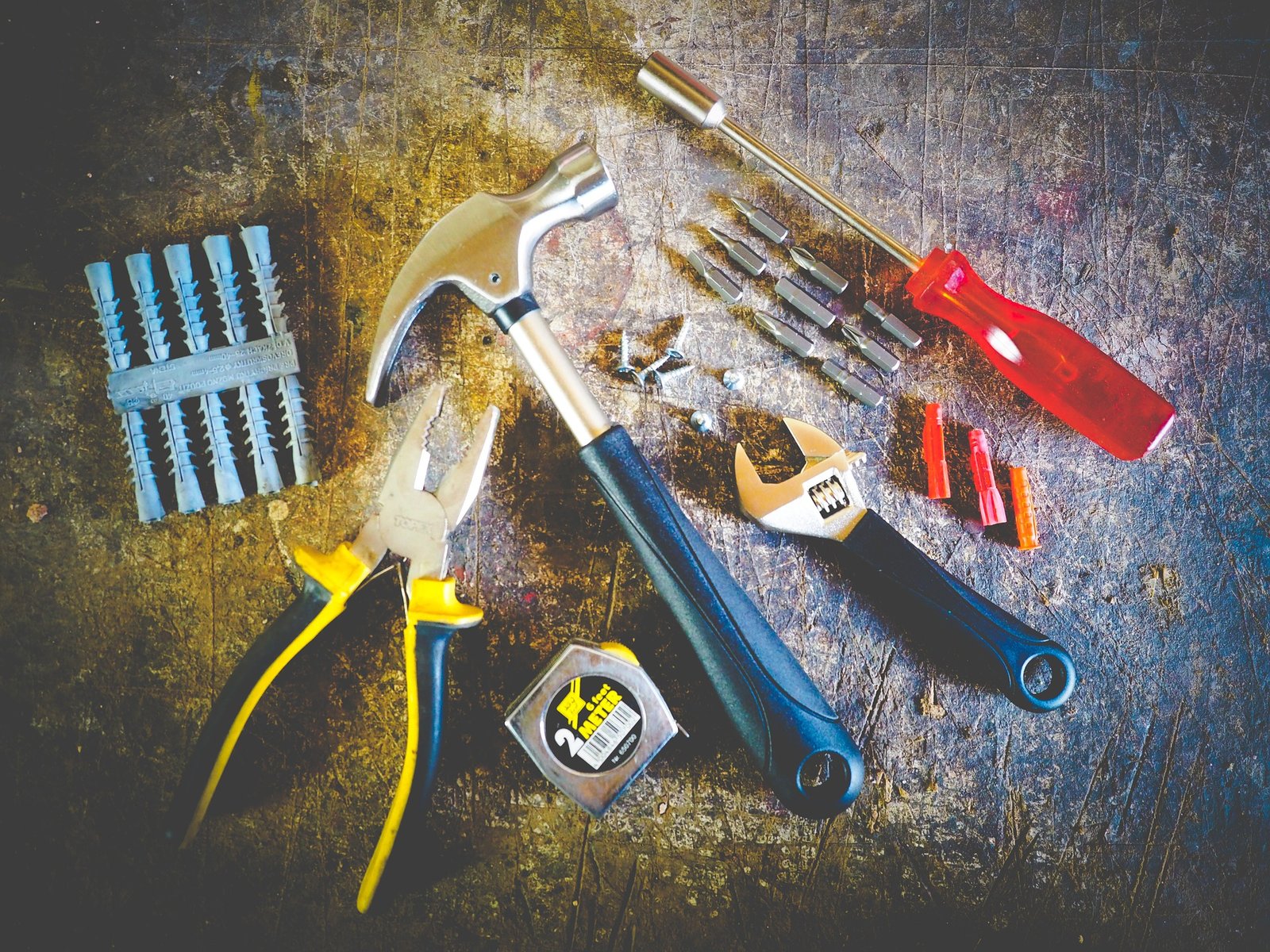There are many doubts shared by users who hear about screwdrivers or even use them as a hobby or for work in factories. and which can often be solved with short and incisive answers: let’s discover together the most frequent doubts and their respective answers to get to know these tools better.
First of all it is good to know what types of power tools exist? And which of these do screwdrivers fall into?
Power tools can be classified on the basis of their field of application in the following main types:
- Drilling tools
- Cutting tools
- Screwing tools
- Planing tools
- Milling tools
- Parting and ponzoning tools
- Sanding tools
- Percussion tools
- Junction tools
Screwdrivers fall into the category of screwing tools even if there are, as we have already seen, some models that perform small drilling jobs.
On What Principles do Power tools Work?
Power tools work on the basis of some fundamental principles that we are now going to list:
- Oscillation
- Rotation
- Percussion
- Linear motion
- Heat
What is a screwdriver?
The screwdriver is an indispensable and very important element for your toolbox. The screwdriver is a useful tool not only for professionals who work on construction sites but also for simple DIY enthusiasts who often deal with repairs and projects in their own homes.
When were screwdrivers invented?
The first screwdriver models probably originated in the late Middle Ages. These were obviously manual models and were highly developed in France or Germany in the late 1400s. These screwdrivers had pear-shaped handles. From here many years later the cordless screwdrivers were born which made this element even more precious by making it much more comfortable by eliminating the need to manually turn the screwdriver. Using a screwdriver manually for an extended time was frustrating, causing hand cramps.
Why buy a Screwdriver?
With a screwdriver you can do many things, for example, assemble furniture, hang clothes, and even build a wooden house on the tree. Obviously, only the screwdriver, in this case, is not enough but it is also useful to have a tool that, in addition to screwing, knows how to drill wood and metals.
What are the benefits of using the Screwdriver?
The use of a screwdriver undoubtedly has many advantages for those who use it. They save a lot of time by allowing those who use them to take care of planning and assembly rather than taking forever to manually unscrew or tighten the screws. The benefits are:
Portability: Cordless screwdrivers are easily portable. They are very light, compact and can go anywhere you need to screw in a loose screw or put something together. Battery-powered models can be used without having to worry about long and bulky cables.
Flexibility: Flexibility is a feature that makes cordless screwdrivers very popular. No constraints to a specific electrical socket and ability to be used in extremely confined spaces.
Compactness and ease of Transport: the models of screwdrivers on sale on the market have small dimensions and are extremely compact. This makes them easily transportable in the crate or backpack.
Safety for those who use it and for others: safety is of fundamental importance when working with work tools. The advantage of a cordless screwdriver, later we will see the differences with the electric one, is that there are no cables to worry about. It is often easy to pull things over your head or feet by getting tangled in an electric cable. Electric cables can pose a danger to other workers or family members if they move from one room to another as they can cause tripping.
Versatility for many different projects: One screwdriver can be used for many different projects making everything much easier For example, to assemble or disassemble handles, furniture, drawers. Screw and unscrew an object or even build a shelf.
Efficiency for jobs that need to be done quickly: as already mentioned, the advantage of a cordless screwdriver is the time it saves. Obviously it will be necessary to ensure a complete recharge that can guarantee greater efficiency for the jobs that need to be done quickly.
Who are the screwdrivers used by?
Screwdrivers are widely used by professionals including:
- Furniture manufacturers;
- Carpenters;
- IT specialists;
- Repair professionals;
- DIY lovers.
What are the main types of Screw Drivers?
The most powerful and reliable in the category are electric screwdrivers since their body is very solid and this makes them more resistant to various types of work and physical shock. There are, however, then the battery screwdrivers that usually use nickel cadmium or lithium accumulators. These have two operating speeds and are used in various fields of work. Furthermore, the most recent models are comfortably manageable and equipped with greater comfort. These are also equipped with the Power Control system, a system that is able to save important quantities of energy and channel it towards a necessary effort.
What points must be followed for a good use of the screwdriver?
When using the screwdriver, the following points must be taken into consideration:
- Put the tip on the head of the screw and exert a slight pressure on the screwdriver;
- Make sure that the tip is inserted straight into the screw head, otherwise the screw could be damaged;
- Start the screwdriver by pressing the on / off switch;
- To screw wood screws, first drill a guide hole to facilitate screwing and prevent the piece from splintering;
- The guide hole serves two purposes. It acts as a guide for the entry of the screw and prevents the wood from becoming distorted or splintering;
- The guide holes must be drilled to a depth equal to or greater than the length of the
used screw. - Select forward rotation to screw in the screws, and reverse rotation to extract them;
- Be careful not to overtighten the small brass screws. Their heads are easily twisted and the thread could be damaged. It is recommended to manually tighten these screws;
- Use Phillips screws whenever possible. They are easier to screw, because the tip of the screwdriver enters more firmly in the head of the screw;
- To insert a screw in an already threaded hole, start screwing it by hand. Screw the screw until you feel that the thread is gripping, and then use the screwdriver to tighten the screw;
- To use the screw nuts supplied with the screwdriver, be careful not to over tighten the nuts as they could get damaged.
What are the dimensions of the Guide Hole?
In this small diagram we see a small guide for the size of the guide hole:
- Screw Size No. 6 (3.5mm); soft wood (2.0 mm); hard wood (2.5 mm);
- Screw Size No. 8 (4.0mm); soft wood (3.2 mm); hard wood (3.5 mm);
- Screw Size No. 10 (5.0mm); soft wood (3.5 mm); hard wood (4.0 mm).
What should you pay attention to when using a screwdriver?
The screwdriver is used to fix and loosen screws. During these operations, however, the device could have particularly dangerous reactions for those who use it. The causes can be:
- Kickback pairs;
- Bit slipping;
- Noise;
- Seizure phenomenon.
How can you protect yourself from backlash torques?
With due measures, unauthorized and dangerous backlash torques can be avoided. The measures to be taken are certainly a correct choice of the screwing tool and a correct adjustment of the same, for example of the torque or depth rod, based on the manufacturer’s instructions.
How can you protect yourself from bit Slipping?
There are four main causes of bit slippage. Let’s see specifically what they are. The first cause is undoubtedly the size of the bit not suitable for the screw; a second cause is the angled application of the bit on the screw. The angle during start-up and the pressure that is too low are the other two causes that cause the bits to slip. Each of these cases leads to an application error. The effects of the bit slipping can cause possible danger of injury to the user; damage to the workpiece; damage to the screw; damage to the bit itself. Such application errors are made very often, so it is important to take the necessary precautions before using the tool.





